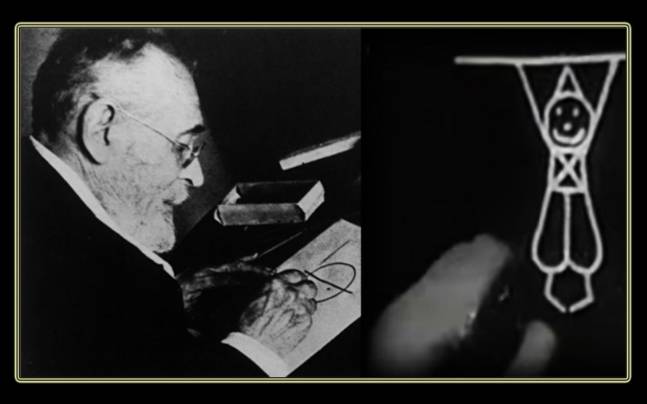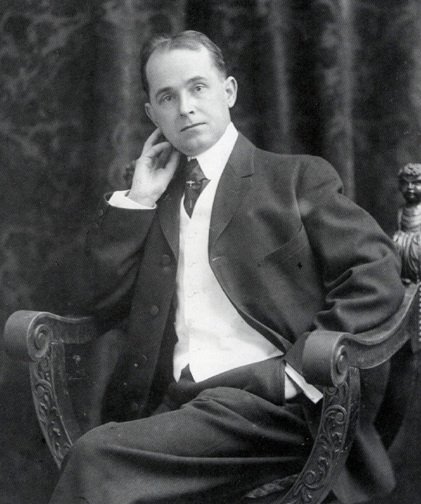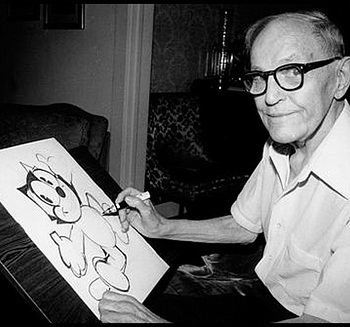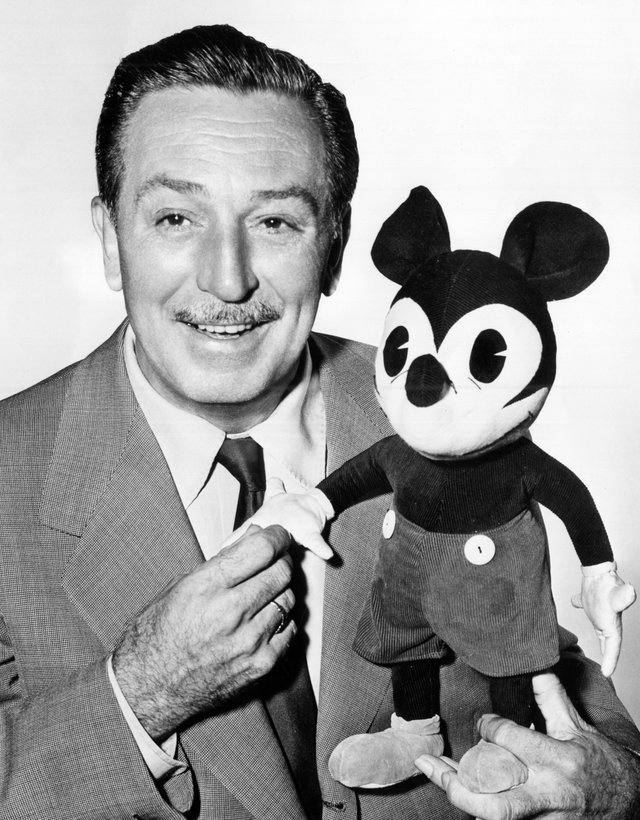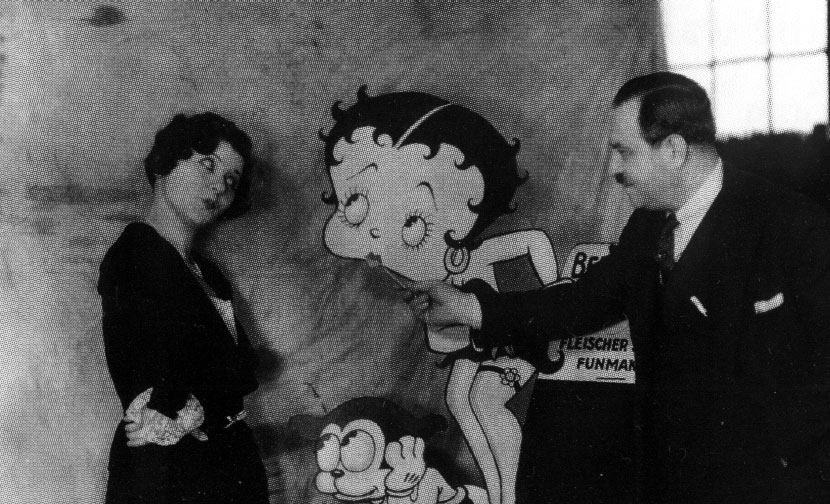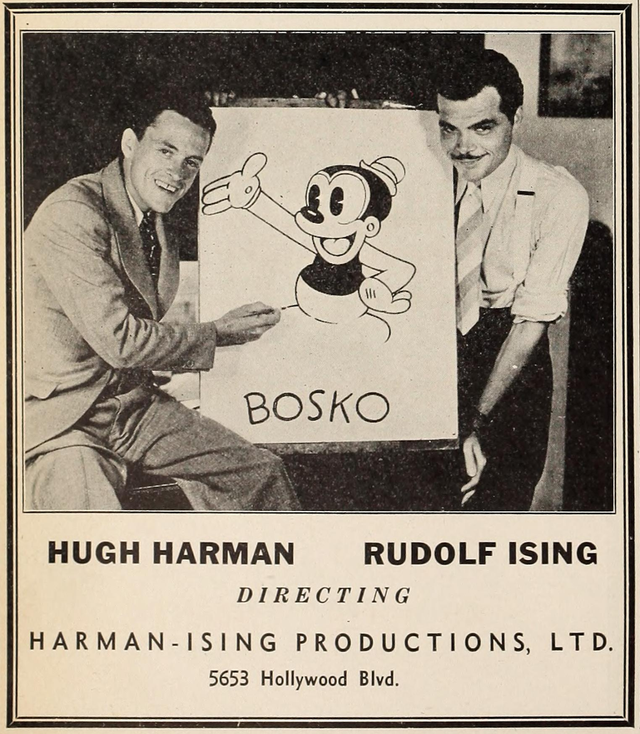The animation before the arrival of disney
In 1937 Walt Disney changed forever the world of animation with the release of the film 'Snow White and the Seven Dwarfs'. However, the history of cartoons dates back to the late nineteenth century, and had several metamorphoses in the first decades of the twentieth century with the arrival of the first world famous celebrities.
The first Steps
In 1896, the British filmmaker J. Stuart Blackton was sent as a reporter for the New York Evening World to interview Thomas Edison and talk about his latest invention by that date, a film projector called Vitascopio. The interview was conducted in the studio cabin of Edison, where the inventor recorded Blackton making drawings on a blackboard.
In this recording, Blackton draws a face with several elements, and then erases and changes some making it look like the drawing has reacted. It is a stop motion sequence that, although it is not considered as an animation in itself, was the first in which they began to see the possibilities of this technique.
Émile Cohl
The French cartoonist and animator Émile Cohl is considered one of the parents of cartoons. His legend tells that in 1907, at age 50, he found the poster of a film that was evidently taken from one of his comics. After talking with the owner of the studio he was hired as a scriptwriter, and thus began to get more and more involved in the world of cinema. In 1908, Cohl created Fantasmagorie, which is considered the first fully animated film ever made in history.
In this time the animation was quite rudimentary, and the type of drawing that was used also. He used about 700 illustrations, which he put on top of an illuminated glass. The most interesting of all is that the drawings seemed drawn on a blackboard, although this was nothing more than an illusion produced using the negatives of the drawings.
Winsor McCay
The American cartoonist Winsor McCay is one of the most important names in the history of comics with his classic 'Little Nemo in Slumberland'. In 1891 he participated in a small silent film called Little Nemo, which includes a fragment of pure animation from minute eight. In this fragment we can see already colored animation based on sequential illustrations. Needless to say, McCay greatly influenced later authors, including Walt Disney himself.
In 1914 and after visiting a museum, McCay bet a dinner that he could make the dinosaurs live again. He did it with an animation composed of 10,000 handmade drawings that he had been working on for six months, and the final result was the film 'Gertie the Dinosaur', a film that was the first to mix real image with animation.
Animation is Popular
Otto Messmer
In 1920, Otto Messmer and the Pat Sullivan studio created the character of 'Felix the Cat'. It was a character from the studio itself, so the audience could expect to see more chapters. This in turn gave Messmer and his companions the possibility to explore the character and improve their animation. Although relatively little time had passed since he began experimenting with animation, Felix showed how quickly he was moving forward.
In addition, this character became the first cartoon that produced merchandising, and the studio Pat Sulliven made gold with him. Unfortunately, at that time it was common that the credit for the character was taken by the studio, so that its creator Messmer continued to earn his normal salary even if the studio earned millions with its creation.
Walt Disney
In 1922 the company Laugh-O-Gram Films, Inc. was founded, dedicated to making animated short films based on folktales. Its founders, Walt Disney and Ub Iwerks, had recently closed a studio called Iwerks-Disney Commercial Artists, and the first job of their new company was launched in 1923 with the title 'Alice's Wonderland'.
It was a simple mixture of real image and animation inserting texts in between to tell the story. However, it was only the beginning of the myth of a Walt Disney that began to be consecrated in 1928 with the mythical 'Steamboat Willie', the third installment of a new character that he had just created: Mickey Mouse.
Max Fleischer
With a Disney that was beginning to gather strength and settle recognizable characters with personality, other creators began to follow in their footsteps. In 1930, Max Fleischer launched another of his cartoon chapters, in which appeared for the first time a character named Betty Boop. In it we can see how the sector evolves with drawings that now have voices and music.
This chapter, and those that followed the Betty Boop saga in the following years as the 'Snow White' of 1933 were a good example of what pre-Disney cartoons were like, with a beautiful and cheerful animation that did not worry about be realistic. All the characters were moving continuously, and their gestures were exaggerated and funny.
Also in 1933, Max Fleischer created a new character. He did it in the Betty Boop saga and with the presence of his popular female, but the protagonist was a newly created sailor named Popeye. Although it was his first appearance on the scene, Popeye was already accompanied by Olivia and Brutus.
Hugh Harman and Rudolf Ising
In 1930, two ex-Disney called Hugh Harman and Rudolf Ising issued the first chapter of a new cartoon saga that they called 'Looney Tunes'. They were starring a character called 'Bosko', which although could not match the popularity of Mickey Mouse or Betty Boop was well known at that time.
In 1933, Leon Schlesinger Productions studios were opened, where the Looney Tunes and their sister saga, Merrie Melodies, continued. This second saga created in 1935 the character of 'Porky Pork'. In a chapter of this character entitled 'Porky's Hare Hunt' and directed by Ben "Bugs" Hardaway in 1938 was included for the first time another of the characters that would change everything: 'Bugs Bunny'.
Walt Disney reinvents the animation
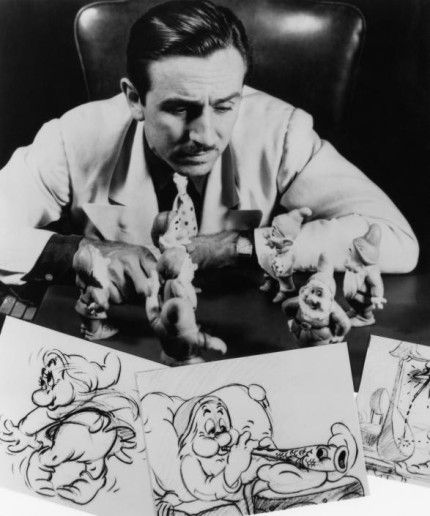
Walt Disney
This decade of the thirties is considered as a golden era of American animation, because as we have seen in it were born some of the mythical characters that are still present in our days. In addition, it was also the decade in which Walt Disney made that qualitative leap with which the world of animation changed forever.
He did it in 1937 with what is considered the first animated feature film, that of 'Snow White and the Seven Dwarfs'. The film is not only the culmination of a decade of advances in animation, but it dared to introduce an enormous realism away from the exaggerations in the movements of the rest of drawings of the time.
